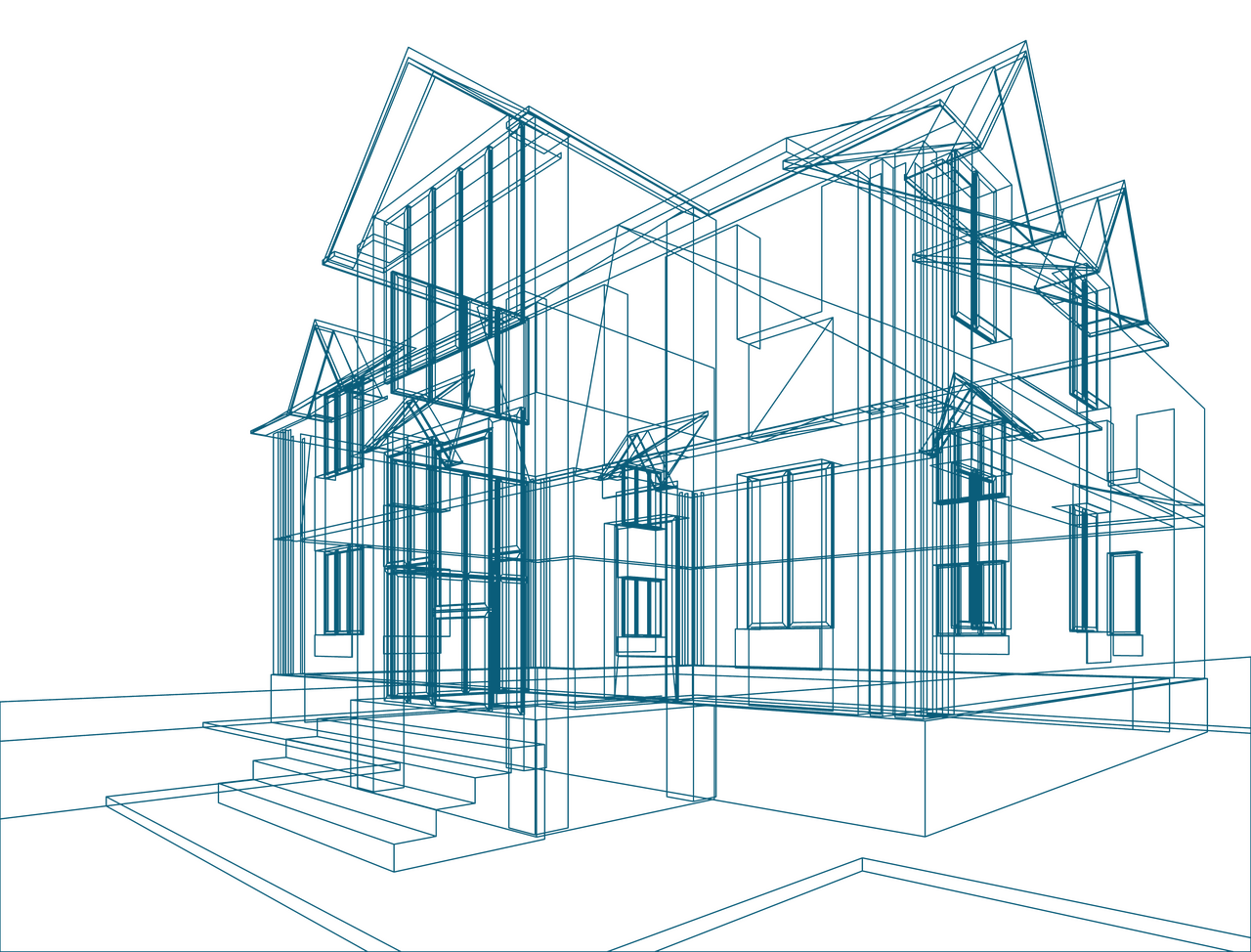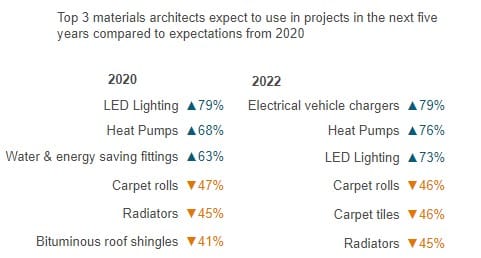

Market report
Sustainable construction trend
Gain valuable insights into the European architectural market with the European Architectural Barometer report from USP Research. Stay informed and make strategic business decisions based on industry trends and data.
News I published 12 October 2022 I Dirk Hoogenboom
Sustainable construction trend: architects continue to use fewer but more sustainable materials
Major trends in the construction and installation sector, as well as in society at large, ultimately affect the choices for materials and products used to construct the buildings around us. Because of their involvement in early stages of the construction process, architects have a high prediction value for many trends in the construction and installation sector, including trends and developments in materials used for building construction in all its facets.
That is why every other year, we dedicate one quarterly report of USP Marketing Consultancy’s European Architectural Barometer to material usage in building construction. For that report, we measure architects’ expectations of materials specified for building construction in the coming five years to construct a clear picture of the developments in materials used. Based on our interviews with architects from eight European countries in the second quarter of 2022, we can conclude that architects generally expect to specify and use fewer materials in the coming years.

Architects expect to use fewer materials
Across all countries, architects expect to use fewer materials for certain purposes or elements of a building. That is, they expect to use a smaller variety of types of construction materials. Those expectations started to appear in our measurement in 2020. In the 2022 measurements, we see that for the coming years, architects generally continue to expect using a smaller variety of materials.
This is the case for many materials in the ten product groups or building parts we interviewed architects about. Looking at building façades, for instance, architects expect to specify less concrete, plaster, architectural glass, metal and fewer bricks and external drywall systems. The only product type they expect to specify more is façade panels. A similar expected reduction of the majority of specified materials can be seen in both pitched and flat roof materials, flooring materials, metals in general, and quite a few materials used for the building envelope.

Exceptions show the quest for sustainability
Given that architects generally expect to specify fewer materials, it is more interesting to look at the exceptions to that statement. Doing so, it becomes clear that the common denominator for most of the materials that architects actually expect to specify more in the years to come is sustainability. Since buildings and building construction use up many resources and are major contributors to annual emissions of greenhouse gasses and pollution, it stands to reason that efforts are taken to make this sector more sustainable.
That sustainability trend is reflected by the few product or building part categories in which a majority of materials are actually expected to be specified more. In the category of insulation, for instance, architects expect to specify all types of insulation material more, except for polystyrene foams. As for installations and climate control, architects also expect to specify all sorts of materials and systems more, except for gas boilers and radiators.
The sustainability trend is not just reflected by better insulation, more heat pumps and fewer gas boilers, however. Looking at other categories, we see that architects expect to opt more often for renewable materials like timber, and fewer plastics and other oil-based materials. These are but few examples of the long list of materials we asked architects from eight European countries about. For a full overview of expected developments in materials used for building construction, we refer you to the Q2 2022 report of USP Marketing Consultancy’s European Architectural Barometer.






